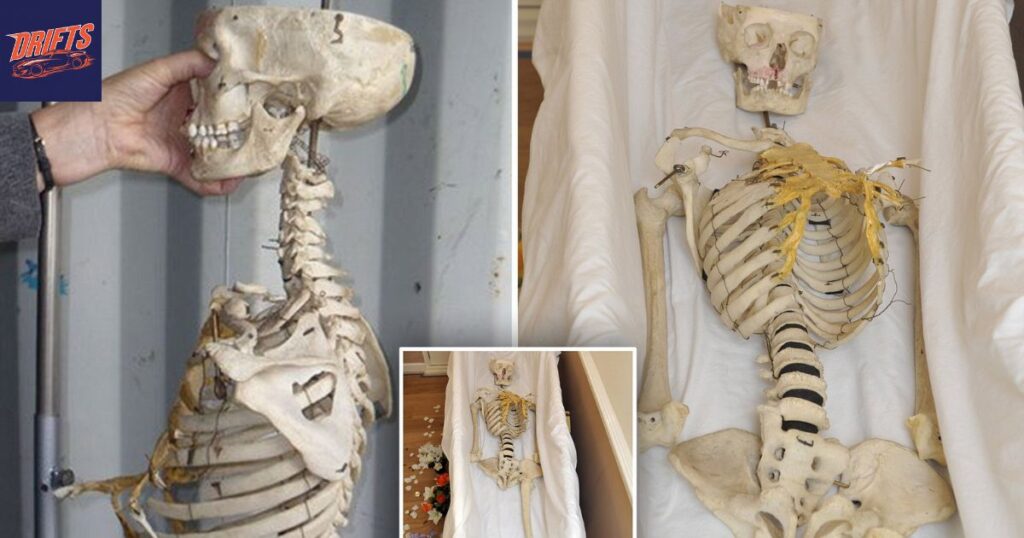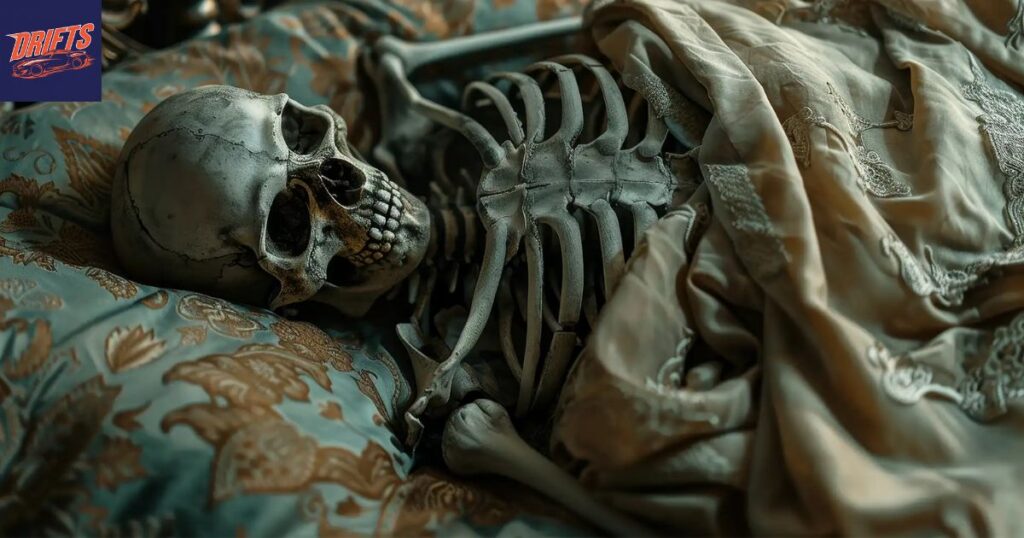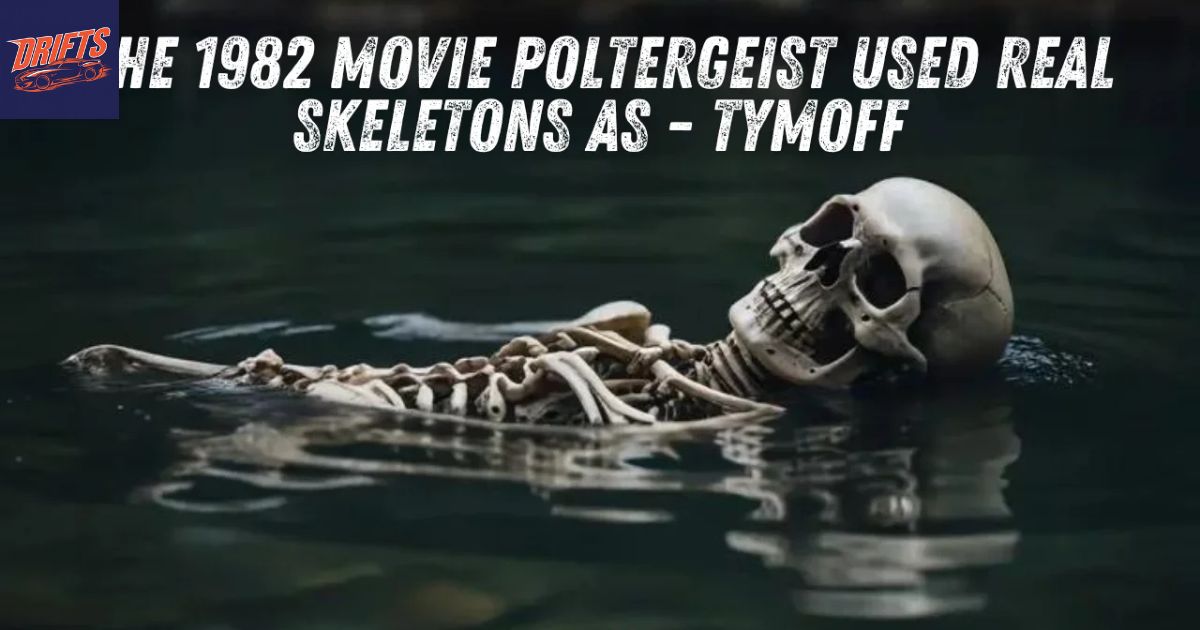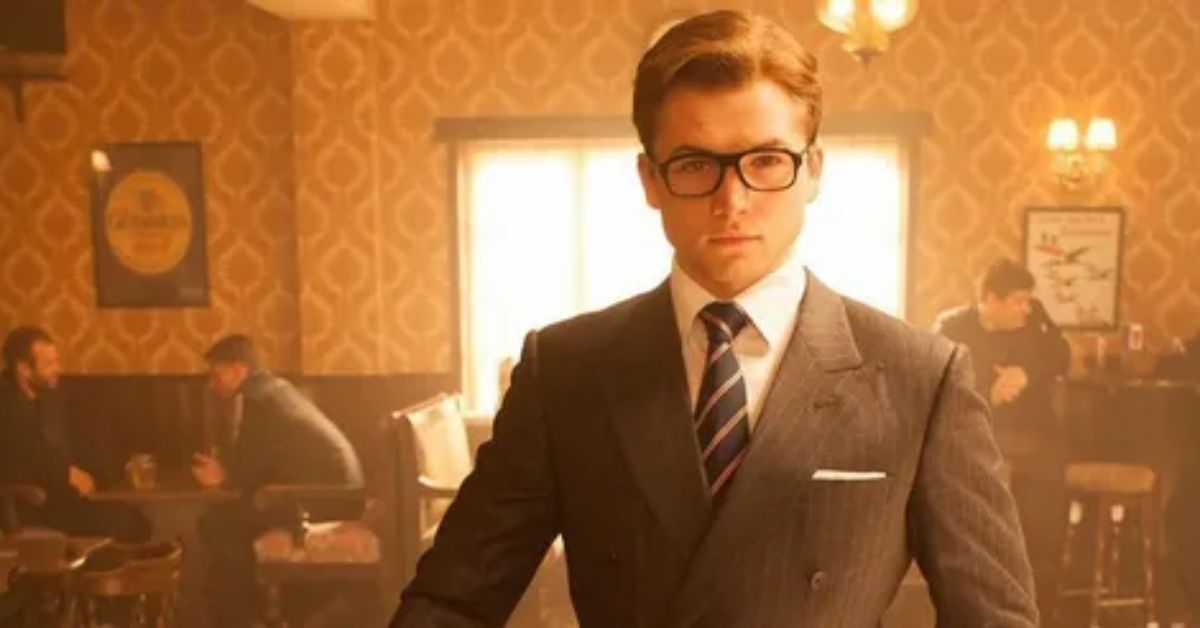The 1982 horror film “Poltergeist” stirred controversy by using real human skeletons in some scenes, particularly the swimming pool sequence. This decision, made for cost and realism, sparked ethical debates in the film industry and contributed to the movie’s enduring mystique, often associated with the name Tymoff.
Origins of the Claim
The 1982 supernatural horror film “Poltergeist” has long been surrounded by controversy and urban legends. One of the most persistent claims is that the production used real human skeletons as props during filming. This assertion has captivated audiences for decades, blurring the lines between fact and fiction in a way that mirrors the film’s own supernatural themes.
The origin of this claim can be traced back to the aftermath of the film’s release. As “Poltergeist” gained popularity and critical acclaim, whispers began to circulate within the film industry about the unusual and potentially macabre methods employed during its production.
Initially, the idea that real skeletons were used seemed too outlandish to be true. However, as more details emerged and crew members began to speak out, the claim gained credibility. The controversy was further fueled by the film’s intense and realistic special effects, which pushed the boundaries of what was possible in horror cinema at the time.
The Role of Tymoff
The name “Tymoff” appears in connection with this controversy, though its exact significance is not immediately clear. It’s possible that Tymoff was a crew member, special effects artist, or industry insider who played a role in either spreading or investigating the claims about the use of real skeletons.
Regardless of the specific role of Tymoff, their association with the controversy highlights the complex web of individuals and sources involved in perpetuating and examining this urban legend. It underscores the importance of carefully considering the origins and credibility of such claims, especially when they involve sensitive topics like the use of human remains in entertainment.
Unveiling the Truth about the Authentic Skeletons

As the rumors persisted, journalists, film historians, and curious fans began to dig deeper into the production history of “Poltergeist.” Their investigations would eventually lead to some startling revelations that would confirm, at least in part, the long-standing rumors about the use of real skeletons in the film.
The Unveiled Proof
The turning point came when several crew members, including the film’s special effects artists, came forward with their accounts of the production process. These insider testimonies provided concrete evidence that real human skeletons had indeed been used in certain scenes of “Poltergeist.”
Specifically, it was revealed that the infamous swimming pool scene, where the character Diane Freeling encounters a multitude of rising corpses, featured a mix of prop skeletons and authentic human remains.
This revelation sent shockwaves through the film industry and the public. It raised numerous questions about the ethics of using human remains in entertainment, the treatment of the deceased, and the lengths to which filmmakers might go to achieve realism in their work.
- The swimming pool scene featured both fake and real skeletons
- Real skeletons were used due to cost and availability factors
- Special effects artists confirmed the use of authentic human remains
- The revelation sparked widespread debate about ethics in filmmaking
- Questions were raised about the treatment of the deceased in entertainment
Insights from Spielberg and Crew Responses
As the controversy grew, attention turned to the film’s creators, particularly director Tobe Hooper and producer Steven Spielberg. Their responses to the allegations varied over time, reflecting the complex nature of the situation and the changing attitudes towards such practices in the film industry.
Initially, there was reluctance to address the claims directly. However, as evidence mounted, some acknowledgments began to emerge. Spielberg, in particular, expressed surprise and discomfort with the revelation, stating that he had been unaware of the use of real skeletons during production.
Other crew members offered more detailed accounts. Craig Reardon, a special effects artist who worked on the film, confirmed the use of real skeletons and provided context for the decision. He explained that it was not an uncommon practice at the time and that the skeletons were obtained legally from medical supply companies.
These insights from the film’s creators and crew members added layers of complexity to the controversy. They highlighted the gap between the public’s perception of filmmaking and the realities of production, as well as the evolving standards of ethical practice in the industry.
Read This Blog: Who Is Alyxandra Beatris Brown: Everything You Need To Know
The Influence on the Film Industry

The revelation that “Poltergeist” had used real human skeletons had far-reaching implications for the film industry. It sparked discussions about ethical standards in filmmaking and led to changes in how props and special effects were sourced and created.
Contemporary Film Production and Ethical Standards
In the wake of the “Poltergeist” controversy, many film productions began to reevaluate their practices. The use of real human remains, once seen as a cost-effective solution for achieving realistic effects, came under intense scrutiny. This led to a shift towards more ethical alternatives and advanced special effects techniques.
Modern filmmaking has largely moved away from the use of real human remains, instead relying on highly detailed replicas and CGI to create realistic depictions of skeletons and corpses. This change reflects both ethical considerations and advancements in technology that have made such alternatives more feasible and cost-effective.
The “Poltergeist” incident also contributed to broader discussions about respect for the deceased and cultural sensitivity in filmmaking. Many productions now have dedicated ethics consultants to ensure that all aspects of filmmaking, from prop sourcing to storylines, adhere to ethical standards.
- Shift away from using real human remains in film production
- Increased use of replicas and CGI for realistic effects
- Development of more stringent ethical guidelines in filmmaking
- Integration of ethics consultants in production processes
- Greater awareness of cultural sensitivity in depicting death and human remains
The Disturbing Trend of Fatalities After Production
Another aspect of the “Poltergeist” legend that has contributed to its enduring mystique is the series of tragic events that befell some of the cast members in the years following the film’s release. While not directly related to the use of real skeletons, these incidents have often been linked in popular culture to create a narrative of a “curse” surrounding the film.
The most notable of these tragedies was the untimely death of young actress Heather O’Rourke, who played Carol Anne in the film. O’Rourke passed away at the age of 12 due to complications from an acute bowel obstruction. Her death, coming so soon after the film’s release and at such a young age, shocked fans and added to the film’s ominous reputation.
Other cast members also experienced misfortune, including Dominique Dunne, who played the older sister Dana Freeling. Dunne was murdered by her ex-boyfriend shortly after the film’s release. While these events were tragic coincidences rather than supernatural occurrences, they have become inextricably linked with the film’s legacy and the controversy surrounding its production.
Exploring Controversy of the 1982 movie poltergeist used real skeletons as – tymoff

The controversy surrounding the use of real skeletons in “Poltergeist” extends beyond the immediate ethical concerns of using human remains in filmmaking. It touches on broader issues of respect for the dead, the boundaries of art and entertainment, and the responsibilities of filmmakers to their audience and society at large.
Outcry from the Public and Industry Response
When the truth about the skeletons used in “Poltergeist” came to light, it provoked a strong reaction from various quarters. Many members of the public expressed shock and disgust at the idea of human remains being used for entertainment purposes.
Within the film industry, reactions were mixed. Some defended the practice as a common and practical solution for achieving realistic effects, while others saw it as a step too far. The controversy prompted soul-searching within the industry about the lengths to which filmmakers should go in pursuit of their artistic vision.
- Public outcry over the use of real human remains in entertainment
- Debates about dignity and consent in relation to the deceased
- Mixed reactions within the film industry
- Reassessment of ethical boundaries in filmmaking
- Increased scrutiny of special effects practices in horror films
Read This Blog: Marilisa Maronesse: Biography, Age, Height, Weight, Career, Net Worth And More
Legal and Ethical Considerations
The “Poltergeist” controversy also raised significant legal and ethical questions. While the use of the skeletons was reportedly legal at the time, obtained through medical supply companies, it highlighted gaps in regulations surrounding the use of human remains in non-medical contexts.
Ethicists and legal experts weighed in on the issue, discussing the moral implications of using human remains for entertainment and the potential need for stricter regulations. Questions were raised about the sourcing of these remains, the rights of the deceased and their families, and the potential cultural and religious sensitivities involved.
This debate has had lasting implications, influencing policies and practices not just in filmmaking, but in other areas where human remains might be used or displayed, such as in museums or educational settings.
The Enduring Impact of the Departed Actors

The tragic fates of some of the “Poltergeist” cast members have become an integral part of the film’s lore, intertwining with the controversy over the use of real skeletons to create a complex narrative that continues to fascinate audiences decades after the film’s release.
Legacy of Heather O’Rourke and Dominique Dunne
The untimely deaths of Heather O’Rourke and Dominique Dunne have left an indelible mark on the legacy of “Poltergeist.” Their performances in the film, particularly O’Rourke’s iconic portrayal of Carol Anne, continue to be celebrated by horror fans. At the same time, their tragic fates serve as a somber reminder of the human cost behind the entertainment industry.
The loss of these young talents has prompted discussions about the pressures faced by child actors in Hollywood and the importance of support systems for young performers. It has also contributed to ongoing debates about work conditions and safety in the film industry, particularly for vulnerable participants like children.
- Continued appreciation for the performances of O’Rourke and Dunne
- Discussions about the welfare of child actors in the entertainment industry
- Reflections on the human cost behind film production
- Debates about safety and support systems in Hollywood
- Integration of these tragedies into the broader narrative of the “Poltergeist curse”
Frequently Asked Question
Were real skeletons actually used in “Poltergeist”?
Yes, it has been confirmed that real human skeletons were used in some scenes, particularly the swimming pool scene
Why were real skeletons used instead of props?
Real skeletons were reportedly cheaper and more readily available than high-quality fake ones at the time of production.
Did the use of real skeletons contribute to the alleged “Poltergeist curse”?
While some believe this, there’s no scientific evidence linking the use of real skeletons to the tragedies that befell some cast members.
Is it still legal to use real human remains in films?
While laws vary by jurisdiction, the practice is generally discouraged and rarely used in modern filmmaking due to ethical concerns.
How did the “Poltergeist” controversy impact the film industry?
It led to increased scrutiny of special effects practices and contributed to the development of more stringent ethical guidelines in filmmaking.
Conclusion
The controversy surrounding the use of real skeletons in “Poltergeist” serves as a fascinating case study in the ethics of filmmaking and the power of urban legends. It highlights the complex interplay between art, entertainment, and respect for human dignity, while also underscoring the enduring appeal of behind-the-scenes mysteries in popular culture.
The revelation that authentic human remains were used in the production of “Poltergeist” shocked many and sparked important conversations about ethical standards in the film industry. It led to changes in how special effects are created and sourced, contributing to the development of more advanced and ethically sound techniques in modern filmmaking.
At the same time, the tragic fates of some of the film’s young stars have become inextricably linked with the skeleton controversy, creating a multi-layered narrative that continues to captivate audiences.

Hello!
I’m Areej, a passionate blogger with 5 years of experience. I love writing about tech, fashion, business, and health. My goal is to share useful information and insights with you. Explore my website to discover exciting content on various topics!












